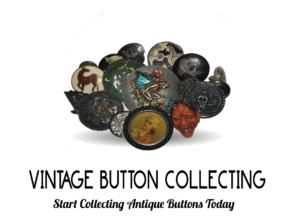
Antique Button Restoration: Beginner’s Advice
So you’re a button collector and you’re interested in antique button restoration and cleaning so that you can sell your wares or display them at a show or convention. The following information will provide you with the basics on antique button restoration for a wide variety of button styles, button materials and situations.
Bone
To perform antique button restoration on buttons made of bone, start by rubbing the buttons with a clean, dry polishing cloth. Then, cut a lemon in half and dip it in salt. Rub the salted lemon over the surface of the button, then quickly wipe with a damp cloth and dry with a separate clean, soft towel.
Celluloid
When performing antique button restoration on celluloid, NEVER expose these buttons to water. Simply wipe thoroughly with a clean, dry polishing cloth.
Ceramic
If the ceramic has been baked, it is easy to clean and restore. Simply wipe with a damp cloth and dry with a clean towel. If the ceramic has not been baked or you aren’t sure if it has been baked, it is best to take these to a professional who specializes in antique button restoration to ensure you don’t ruin the paint.
Composition
Start by wiping buttons with a clean polishing cloth. Next, apply a small amount of baby oil, mineral oil or furniture polish to a different soft cloth and polish the buttons. For extra shine to add zip to your antique button restoration, use natural self-shining show polish to polish a second time.
Fabric
Never rub or brush fabric buttons. No matter how strong the material seems, if the buttons are antiques, it may take less pressure than you think to break threads. Put a small amount of button cleaning fluid into a glass jar, then place the buttons in the jar and stir for two minutes. Remove the buttons from the jar, lay them on an absorbent cloth and allow to air dry.
Leather
When performing antique button restoration on leather buttons, use saddle soap, Neetsfoot oil or neautral show cream. Apply with a soft cloth and massage the cleaning substance gently into the leather. You may also use baby oil or mineral oil if you don’t have anything else on hand.
Pewter
There are several methods for performing antique button restoration on pewter buttons. One is to use a jewelers polishing cloth to buff. Another is to polish the buttons using the outer leaf from a head of cabbage as a cloth. You can also use Turtle Wax or Chrome Polish with a soft shammy.
Wood
When performing antique button restoration on buttons made of wood, never use water, as it may warp the button. Instead, use a soft cloth with baby oil, mineral oil or furniture polish. If the button has trim or decorative parts that are not made of wood, it is best to avoid furniture polish, as it may damage those materials.
Whatever type of antique button restoration you wish to perform, if you are unsure about how to proceed, talking with a professional antique restorer can usually put you on the right track.








